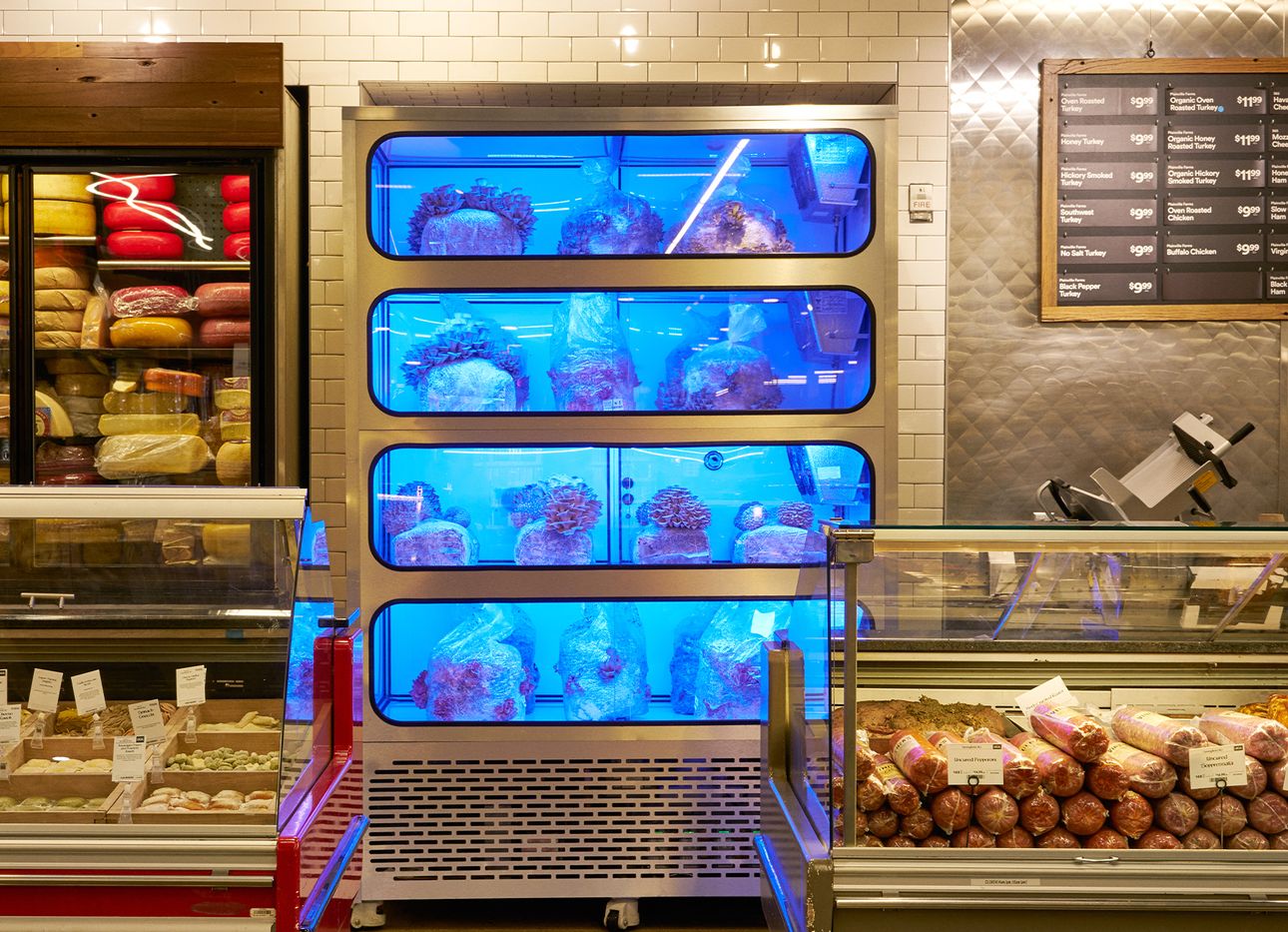
Smallhold’s Mushroom Minifarms Give New Meaning to the Term “Local Food”
In 2017, Andrew Carter and Adam DeMartino retrofitted a shipping container on a farm in Brooklyn and began growing mushrooms—about 50–100 pounds of them every week—inside, and sold them to local restaurants through a company they co-founded called Smallhold. They cultivated multiple varieties—sculptural shiitakes, royal trumpets, yellow oysters, and more—in a substrate made from recycled waste from the restaurant and agricultural industries (coffee grounds, sawdust), and became the first certified organic farm in New York City.
After realizing that mushrooms could be propagated in small, controlled environments, the pair began offering to install a version of their space-age growing pods inside local businesses. The mushrooms developed in Smallhold’s “minifarms”—ultraviolet vitrines that use patented technology allowing for remote control of their temperature, humidity, CO2 levels, and light for optimal yield and nutrient density—now sit in establishments including The Standard Hotel’s East Village café, Bushwick’s Bunker Vietnamese, and Prospect Heights’s Maison Yaki, as well as the Gowanus Whole Foods and the L.E.S. Girl’s Club, a nonprofit that shares its fungi with an area soup kitchen. The in-house farms dramatically shorten Smallhold’s supply chain, and bring customers well within the vicinity of where their food is being grown. (During the pandemic, Carter and DeMartino took their concept a step further by developing D.I.Y. grow kits, allowing people to propagate mushrooms in their homes.)
Smallhold also works with businesses that don’t have their own grow pods. Customers can currently find its fungi—packaged by local workers at local farms using as little plastic as possible—in grocery stores throughout the Northeast and the South; the mushrooms are also available for purchase in bulk. For ideas on how to cook the food, consider Mushrooms in the Middle (Smallhold), Smallhold’s first cookbook, which features 10 recipes contributed by chefs and artists from the fungi community. Dishes include Umami Grog, marked by the savory warmth of dried shiitake mushrooms (from Brian Evans, bar director of Brooklyn’s Rule of Thirds), and Spicy Mini Mushroom Baos (from Jen Monroe, artist and chef of the experimental food project Bad Taste) that resemble red-and-white amanita muscaria toadstools. A portion of the book’s proceeds will benefit the Fungi Foundation, an N.G.O. that promotes fungi research and conservation.
In all its efforts, Smallhold frames mushrooms as umami-laden, antioxidant-rich, and environment-enhancing alternatives to meat. But Carter and DeMartino see the vast mycelial networks as not only beneficial for people and the planet, but as timeless edible vessels that represent the connection between the two. “Mushrooms are, and always have been, remediating our forests, our diets, and our souls,” they write in their cookbook’s introduction. “So of course they’re in the middle of our consciousness as we look inward, searching for hope and community.”